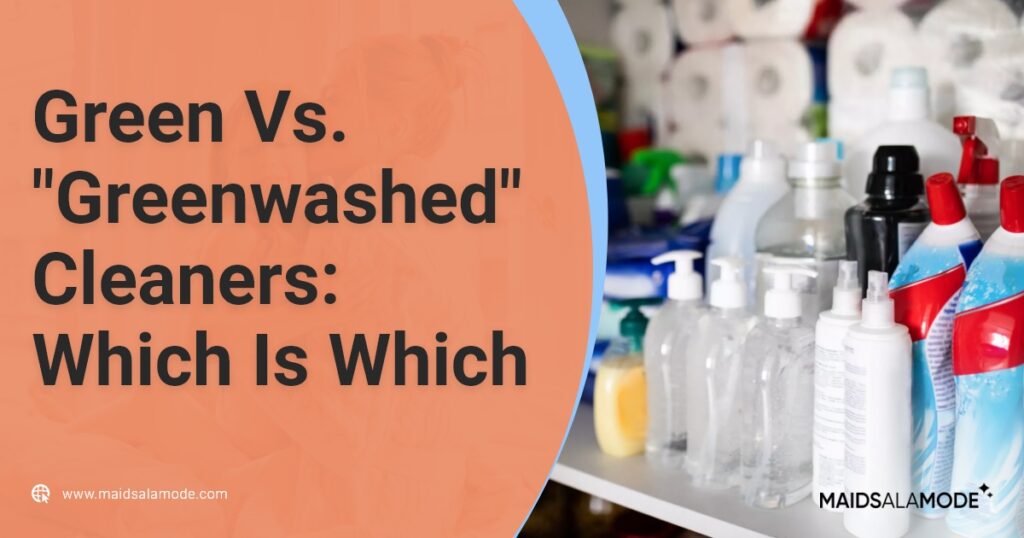How do cleaning products damage the environment? It all depends on the type of cleaner you use! For example, green products are gentler with the environment—and they are safer for your household!
So, does it mean that using green and eco-friendly cleaners is enough to take care of the environment? In a sense, yes! However, not every “eco-friendly” or “natural” cleaner is really what the brand claims.
Learn how to choose the safest options for cleaning your home!
How cleaning products might hurt the environment
Most of the environmental impact of cleaning products comes from volatile organic compounds (or VOCs.) These compounds may be toxic for people and wildlife, but they also damage the environment in some other ways.
However, there are many different VOCs, and not all of them are equally toxic or dangerous. The cleaning products that affect the environment (and your health) the worst contain harmful VOCs like ammonia, chlorine, and sodium hydroxide.
Here are some examples of how cleaning products damage the environment
Water pollution and cleaning products
Nearly all cleaning product residue goes down the drain and ends up in the water. Toxic VOCs like chlorine have an evident impact on wildlife. However, other compounds may seem inoffensive at first sight.
For example, phosphates (a compound formerly used on detergents) is apparently harmless, but it accelerates algae growth, damaging the environment in lakes and rivers!
Air quality and cleaning products
Cleaning products often emit VOCs as gases. It means that some cleaning supplies you use may be polluting the very air inside your home! For that reason, people must use stronger cleaning products in ventilated areas.
Then, what are green cleaners?
A green cleaner is a product with a reduced impact on the environment and health. Usually, green cleaner manufacturers avoid harmful ingredients (mostly toxic VOCs) in their cleaning products.
By removing dangerous compounds, manufacturers reduce the environmental and health risks drastically. However, as you can read below, finding truly green cleaners is more challenging than it seems!
Green vs. “greenwashed”: how to tell the difference!
Although several green cleaning products are available in the stores, many other products just claim to be “green” or “eco-friendly.” This practice is known as “greenwashing,” and it’s a prevalent practice in household cleaning products.
Here are some useful tips for identifying a truly green cleaner:
1. Read all the labels and ingredients
As mentioned above, the main issue with commercial cleaning products is the harsh and dangerous compounds. However, you can read what’s inside the container on the product’s label in most cases!
Just a few quick tips:
- You don’t need to be a professional chemist; with a few clicks on the internet, you can learn if a compound is safe!
- If the compound seems like a tongue twister, it’s likely not good for the environment.
- The fewer ingredients, the better!
2. Look for the brand’s specific claims
Broad claims about the environment are a clear sign of “greenwashing.” Confirming if a product is “natural” or “good for the environment” is almost impossible. However, specific claims like “chlorine-free” are facts you can confirm with a glance at the label!
3. Trust in third-party green certifications
It doesn’t matter how transparent a brand is about its products; it’s much easier to trust what a third-party company or institution says. Look for official and third-party certifications—like the Safer Choice or Design for the Environment programs!
Green cleaning services in Mobile, AL
With Maids à la Mode, you don’t need to worry about the cleaning products. We use only plant-based cleaning products to tackle your chores—and old-fashioned elbow grease, of course! Learn more about our green home cleaning service here.

